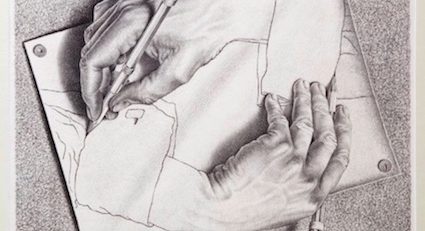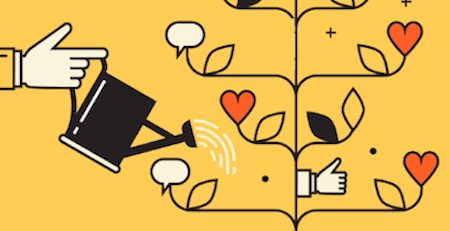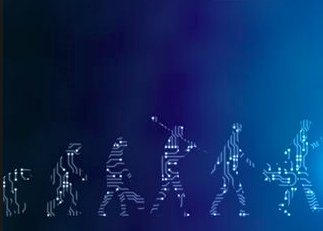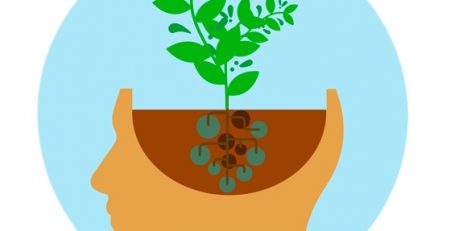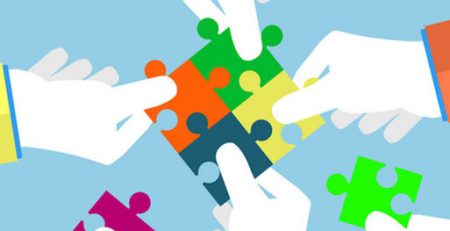Learning How To Change Part 3
Written by: Cahide Akkuzu
Reading time: 6 minutes
In this series of articles, I propose to look at change not as a challenge we must manage, but as a process that we can consciously approach so that it helps us to learn how to change. Change is a 3-step transition process people go through as they internalize and come to terms with their new situation. It’s a journey from one identity to another, which William Bridges divides into three stages: Endings, Neutral Zone, and Beginnings. In Part 1 of this article we looked into the ‘Ending’ stage which involves processing our losses. To read the article click: https://www.contextprofessionals.com/en/learning-how-to-change-part-1/
In part 2 of this article we looked at the ‘Neutral Zone’ which is the time between an ending of the old and the beginning of the new. We saw that this is an uncomfortable in-between space full of uncertainty as we move from one identity to another. We are in a limbo, where there’s nothing to hold onto because what was old and familiar is now gone and what is new has not yet fully taken form. We looked into strategies of how to deal with the uncertainties in this period of time. To read the article click: https://www.contextprofessionals.com/en/learning-how-to-change-part-2/
In this article we will be focusing on the ‘Beginnings’ stage, which is the last stage of this three-stage transition process. ‘Beginnings’ only happen when we are able to make an inner change and internally accept to really enter a new identity or experience. Once you digest the loss of the ‘Endings’ phase and give yourself time to overcome the uncertainty in the ‘Neutral Zone’ stage, only then will you be ready to move on to the ‘Beginnings’ phase, which is a process in itself.
‘’They did not know what we can now sense as we contemplate the course of history: that change begins in the soul before it shows in our life.’’ – Franz Kafka
Remember the difference between change and transition? Change has to do with external circumstances whereas transition is an internal process describing the internal changes we make in response to that change. Starts and beginnings work the same way. Starts operate on a set timeframe but no amount of scheduling can hurry people into a new “beginning.” With the influence of some external factors, we may find ourselves in ‘our new conditions’, we may have moved to a different city, we may have become a mother or a father, we may have started a new job, or we may have experienced an unexpected loss. Finding ourselves in a new condition does not mean that we have completed the ‘Beginnings’ process. We may have not reached the other side of the road internally yet. ‘Beginnings’ is a process that can only begin after completing our process in the ‘Neutral Zone’, that is, after fully accepting our losses in the change process.
“We must let go of the life we have planned, so as to accept the one that is waiting for us. The old skin has to be shed before the new one can come.” — Joseph Campbell
This process may not be so linear. When we arrive at a new beginning, we may have mixed feelings. We’ve been through the ups and downs of the neutral zone, so finally beginning might feel like a relief. However beginnings can still be scary. We still had different options open to us when we were in the neutral zone, but now we are committing to walk the path we have chosen for ourselves. From time to time, our old memories may come to mind re-opening wounds related to prior losses. We may miss our old identity that we left behind and said goodbye to, our emotions are not easy to control. The ending is even more final now and there might be a new layer of emotions to process as that realization sinks in. Also, a new beginning always brings with it more risk taking. Whenever we embark on something new, we don’t know how it will work out. There’s uncertainty about whether we will be able to rise to the task or how we will adjust to our new responsibilities or identity. When we start a new job, we don’t know how it will work out for us, whether we can handle it, or how we will adapt to this new identity, responsibilities or lifestyle.
There is no secret to magically making these scary aspects of new beginnings disappear. Let’s look at what you can do to support yourself and ease the transition to your new identity.
First of all, understand where you truly are in the three-step transition process. Are you really ready for a new start, or are you just rushing through the ‘Neutral Zone’ and trying to escape the uncertainties without giving yourself enough time to accept and digest? If you are feeling that you are liking a new idea, if you have interest or are curios about a new experience, or you have a sense of an inner calling to something new, these may be signs that you are actually ready for a new start. And, if you do feel ready for a new start, don’t rush that moment of transition either! The shift of a new beginning does not happen overnight.
It is time to envision your new reality, your new identity! Visualize your goals associated with this new beginning. How will that look like? Describe how you will feel when you reach these goals. Become invested in your future to make this new dream come true. Know that you do not start from point zero. Define where you are today, your starting point, in detail as you drive towards your new goal.
Experiences
Write down all the experiences you have had and what you have learned through these experiences. Be very objective. Consider all aspects of your life, your work, family, friends, social circles and hobbies. Consider every identity you currently have or did have in the past. When writing down your experiences focus both on successes and accomplishments as well as on failures. What have your learned through these experiences? Your learnings are now your most valuable assets. This exercise may not be easy, but give yourself enough time, start writing, then review and add to the list. You will see that many things will pop up as you give yourself enough time to think through and review over and over. You will be astonished about the amount of your assets that you actually have!
Competencies
When you look at the list above, identify what your particularly strong competencies are. What are you doing well? Which of your muscles have strengthened from your experiences? Which of your strengths have you been mostly leaning on in order to achieve those accomplishments?
Resources
List what resources you have. Your experiences and competencies are naturally your resources. Besides those, notice what other resources you have accumulated over the years. Your network of people that you can reach out to, school mates, relatives, friends, old and new work colleagues, clients etc.
When you list all of your experiences, competencies and resources you will be astonished to see that you are starting off to your new beginning from a very rich ground. Please invest enough time to do this work and go as granular as possible, do not miss any important detail.
One of the approaches that I find very valuable comes from the famous author and world-renowned executive coach Marshall Goldsmith. The book I definitely recommend for those who haven’t read yet is “What Got You Here, Won’t Get You There”. In this book, he is proposing a very simple yet very powerful approach of how you can create your own future for your personal life, your career goals as well as for team goals.
Use this approach after you have visualized your goals associated with your new beginning. This approach will help you to get clarity about what you have to do that will successfully lead you to your visualized goal of your new beginning.
Create:
What do you need to create that does not exist today? These may be new competencies, a new social network or learning a new language if you have moved to a new country, maybe acquiring new eating habits, acquiring new knowledge or adopting a new work style required by a new job, or adopting a new life style if you are raising kids.
Preserve:
What are your already existing experiences, competencies and resources that will support you in your new identity? Identify the strengths and assets you have that you want to protect and maybe improve or make more use of. What do you want to preserve and improve that already exists? When you identify these, you will notice your assets that you can leverage on your path to your new identity.
Eliminate:
Spot the obstacles blocking your way to bring your new beginning to life. What do you need to take out of your life now and say goodbye to? What is it that you must stop doing that doesn’t serve you any longer? If you have been promoted and are now managing your former peers, you may need to be more careful in your communication about certain topics. If you have suffered a financial loss, you may need to eliminate some spendings. If you’ve become a parent, you may need to eliminate the freedom to take decisions by your own that impact your family life. If you have a health issue, you may need to stop eating a specific sort of food that’ s not good for you.
Accept:
Sometimes it is necessary to accept certain things as they are in order to internalize and bring your new identity to life. You may have to accept that some people will not like your decisions and that you will be critized. You may need to accept that you will not have any control over a certain situation any longer. You may need to accept that you do not have freedom any longer on a topic that is important for you.
As you make your new beginning, determine what kind of communication language you want to have in your new identity. Find out what words you want to use, both for yourself and when you are communicating with others. British author Charles Reade expressed the importance of this very well with his famous words:
‘’Mind your thoughts for they become your words.
Mind your words for they become your actions.
Mind your actions for they become your habits.
Mind your habits for they become your character.
Mind your character for it becomes your destiny.’’
– Charles Reade
It can be very difficult to catch our thoughts. But you can identify words that will support your new beginning and fit your new identity. Identify the words and sentences you want to say more. Practice using these words and sentences more so that at one point they become second nature and without any conscious effort they come natural. This will support you on your path to the goal you have envisioned for yourself.
Famous author Seth Godin’s latest book “The Practice – Shipping Creative Work” begins with the following sentence: “The magic of the creative process is that there is no magic”. A creative process is any kind of work. Anything that you do you create. The main message in his book for me is that if you want to be able to do something well, you have to consistently do it over and over again. If you want to cook well, you must cook every day. You don’t have the luxury to wake up one morning and say ‘I don’t feel like cooking today’. And, even if you don’t feel like cooking that day, you still have to cook. There is no magic in becoming a good cook. It is important that you make progress every day by investing your time and energy consistently into that what you want to become, into your new beginning, into your new identity. Do, what you say you will do, every day. Even if there is a day when you don’t want to, and you have every reason to procrastinate, just put all of your energy together to make the first step, over and over again, and the next step will follow. Reward yourself for this, appreciate yourself all day long for the magic that you are creating by being every moment who you are in your new identity.
Here we are at the end of this three-part article about how we can learn to change. Instead of being the victim of an unwanted situation that requires us to change, we can walk through this psychological 3-step process and internalize and come to terms with our new situation. We now know that change is not an easy transition like taking off your old coat and putting on a new coat. The most important thing is to give yourself time for each step in the process without rushing. You are not late for anything in your life. Take away the pressure of time. Be your own best friend, there is nothing in the world that’ s more important than you!
“I didn’t see it then, but it turned out that getting fired from Apple was the best thing that could have ever happened to me. The heaviness of being successful was replaced by the lightness of being a beginner again, less sure about everything. It freed me to enter one of the most creative periods of my life.” – Steve Jobbs
Resources:
- Transitions: Making Sense of Life’s Changes – William Bridges
- ‘What Got You Here, Won’t Get You There’ – Marshall Goldsmith
- The Practice: Shipping Creative Work – Seth Godin
Context Professionals Corporate Coaching and Consulting











